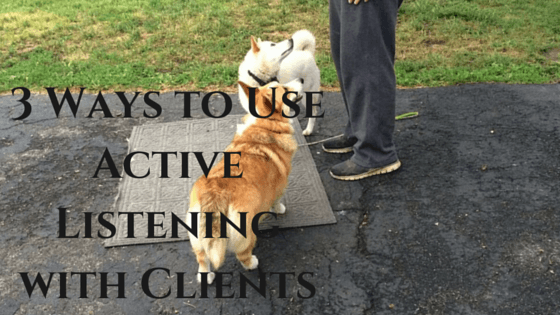
Active Listening With Clients Can Help Your Clients Go From Confused To Cooperative
Being a dog trainer involves more than having a background in dog knowledge, it requires us to utilize our people skills. As much as we’d love to say “it’s all about the dogs”, in reality a majority of our interactions are with their humans. People skills are an important tool of the trade and can go a long way in strengthening our relationships with our clients.
Active listening with clients is a key aspect of our jobs and a skill we have to work on so we can be more effective in our work.
1. Give Your Full Attention
No texting or multi-tasking when speaking with a client. Just as your time is valuable, their time is, too. Make eye contact, and periodically give feedback that you are engaged by saying things like “yes” and “uhuh”, because this encourages the speaker to continue. Make sure your body language is open and inviting, as well as your facial expressions – smile!
2. Provide Feedback
Sometimes it’s hard to put into words what we want or need. The same goes for frustrated dog owners. When you’re providing feedback, acknowledge what was just said to you such as “It sounds like you are saying…” or “I hear you saying this …, is that correct?” This helps to re-focus the conversation on the client and to let them know you’re on the same page.
3. Defer Judgment
As dog trainers, we pride ourselves on our wealth of knowledge in the field. When speaking with a client, don’t interrupt with counter arguments. We have all been in positions where we’ve been embarrassed by our dog’s behaviors. By actively listening, you are reassuring the client that they aren’t alone during the training process.
As much as dog training has to do with dogs, it has even more to do with their humans. Being a good listener will help the owner achieve their training goals. Training is an ongoing process with ebbs and flows and if we can be a source of reassurance and guidance for our clients, we are doing our jobs successfully.



